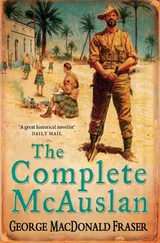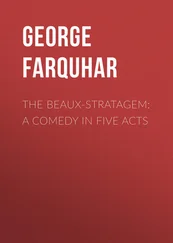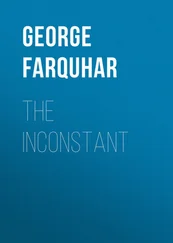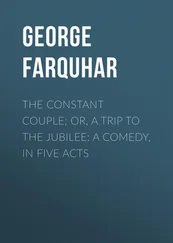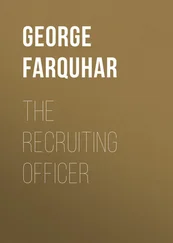George Fraser - The Steel Bonnets
Здесь есть возможность читать онлайн «George Fraser - The Steel Bonnets» — ознакомительный отрывок электронной книги совершенно бесплатно, а после прочтения отрывка купить полную версию. В некоторых случаях можно слушать аудио, скачать через торрент в формате fb2 и присутствует краткое содержание. Жанр: unrecognised, на английском языке. Описание произведения, (предисловие) а так же отзывы посетителей доступны на портале библиотеки ЛибКат.
- Название:The Steel Bonnets
- Автор:
- Жанр:
- Год:неизвестен
- ISBN:нет данных
- Рейтинг книги:4 / 5. Голосов: 1
-
Избранное:Добавить в избранное
- Отзывы:
-
Ваша оценка:
- 80
- 1
- 2
- 3
- 4
- 5
The Steel Bonnets: краткое содержание, описание и аннотация
Предлагаем к чтению аннотацию, описание, краткое содержание или предисловие (зависит от того, что написал сам автор книги «The Steel Bonnets»). Если вы не нашли необходимую информацию о книге — напишите в комментариях, мы постараемся отыскать её.
The Steel Bonnets — читать онлайн ознакомительный отрывок
Ниже представлен текст книги, разбитый по страницам. Система сохранения места последней прочитанной страницы, позволяет с удобством читать онлайн бесплатно книгу «The Steel Bonnets», без необходимости каждый раз заново искать на чём Вы остановились. Поставьте закладку, и сможете в любой момент перейти на страницу, на которой закончили чтение.
Интервал:
Закладка:
5.The Liddel Water runs down from Liddesdale to Kershopefoot, where it is joined by the little Kershope Burn (right of picture). This was a favourite site for days of truce between the English West March and Liddesdale, and is almost the exact geographical centre of the whole West and Middle Border. The frontier line runs down the Kershope and then downstream along the Liddel; the stony shore in the right foreground is England, while the clump of trees beyond the burn stands in Scotland.
6. Hollows Tower, an Armstrong hold on the Esk, has lost its roof but is otherwise a well-preserved specimen of the Border peel. Johnnie Armstrong, the famous reiver, had a tower near Hollows village, but it has disappeared, and the present Hollows was probably built later in the sixteenth century.
7. Carlisle Castle, headquarters of the English West March Warden, and the strongest fortress in the Border country, is a massive hold of red stone which dominates the northern end of the city. Begun nearly nine hundred years ago by William Rufus, it has probably seen as much fighting as any place in Britain; in time of war it was the key bastion against Scottish invasion, and the stark, rugged lines of its architecture make no concessions to romantic beauty. Still, it was not impregnable, and Kinmont Willie was only one of the Borderers who broke out of it. Other temporary residents have included Edward I, Richard III, and Mary Queen of Scots. This view, taken from inside the old city, shows the main gateway (left) and the keep.
8. A reiver’s eye view of the English Middle March from the southern Cheviots just below the Border line, showing the empty tufted hill country typical of this part of the frontier. Redesdale lies beyond the hills in the distance, and the lower land between is the kind of “passage and hye way for the theefe” crossed by the East Teviotdale forayers.
Another common error about Border reiving is to suppose that one side was worse than the other. Most of the examples cited here are of Scottish raids against England; this is simply because the English records are far fuller, and provide more interesting details; if one reads through the colossal lists of raids contained in Elizabethan papers, without a proper background knowledge, one might conclude that poor inoffensive England was an unresisting prey of the predatory Scots. How untrue this would be is shown in the accounting prepared by young Scrope himself in September 1593, of the respective damages done by Scottish and English reivers in the Western Border.
Liddesdale, for once, had taken worse than it gave; for £3230 worth of damage done to England, it had suffered £8000 worth. The Scottish West March raiders had despoiled England to the tune of £6470, but in return had suffered £33,600 of loss. English maurauding had exceeded that of Scotland by the astounding total of almost £32,000 for that particular period.
But usually there was little to choose between the two, and it is more useful to consider the total damage listed by Scrope, which was over £50,000 worth—and this is for only one-third of the Border. Admittedly, the figure covers several years, but if one is extremely conservative and multiplies it only by ten to give an idea of what it means in modern values, we have a crime bill, for the Western Marches only, of half a million pounds.
Another estimate, made in 1596–7 by William Bowes, gives a figure, for all Scottish raids over a ten-year period, of £92,989 6s 1d, of which three-quarters was charged to Liddesdale and Teviotdale. A total, by our standards, of about a million pounds.
Reiving was a very big small business.
1.Dickie of Dryhope (or Driupp) is mentioned in the Ballad of Kinmont Willie as a principal in the raid on Carlisle Castle, and the slayer of “the fause Sakelde”. He is not mentioned, however, in the detailed list of the Carlisle raiders sent by young Scrope to Burghley (April 14 1596), so there is no reason to suppose he was there at all. The last mention of him is on March 7 1594, when at a Warden meeting at Kershopefoot he was stated to be no longer living in Liddesdale.
XIV
A parcel of rogues
The following are case-histories of three Border reivers, pieced together from the records of the time. They are incomplete, but they may be sufficient to give an idea of a typical raider’s activities, and show the kind of factual basis on which so many legends rest.
William Armstrong of Kinmont
Kinmont Willie, perhaps the best-known of Border reivers, deserved his reputation. He raided on the big scale, striking not at single farms and villages, but at whole areas, at the head of bands 300 strong. He liked to ride by day, usually eastward from his tower at Morton Rigg, which was right on the Border not far north of Carlisle. His favourite target was Tynedale.
The first of his raids recorded was against the Milburns in that valley, in August 1583, when Armstrong was probably in his forties. Eight separate villages were attacked, several houses burned, 800 cattle stolen, £200 worth of goods taken, six men killed, eleven wounded, and thirty prisoners carried off.
The following year he and Nebless Clem Croser were back on another day foray with 300 riders, lifting 1300 cattle, sixty horses, and £2000 worth of goods, burning sixty houses, and killing ten men.
In 1585 Kinmont Willie was occupied with raiding in his own country; he accompanied the Earl of Angus’s campaign against the Earl of Arran, and took the opportunity to pillage in Stirling. It was this raid that made his name, and turned it into a byword for violent crime. But his biggest raid of all occurred eight years later, when he was in Tynedale with 1000 men, carrying off more than 2000 beasts and £300 in spoil.
He seems to have been fairly quiet until 1596, when his famous capture and rescue from Carlisle Castle took place (see Chapter XLI), and after that some of the old fire died. Perhaps he was just getting old, but his raids thereafter were minor affairs. He took the Captain of Bewcastle and sixteen others prisoner in 1597, ransomed them, stole twenty-four horses, and committed some “slaughter”; the bill (charge) against him for this was fouled by confession—which means he pleaded guilty to it. At this time he was being raided himself, from the English West March, his house sacked twice and burned once, 300 of his beasts stolen, and two of his men killed. He fell into English hands again on one of these occasions, but was released.
By this time the former leader of the great day forays had declined to the joint command of an outlaw gang called Sandy’s Bairns; in 1600 he attacked the village of Scotby with 140 riders, burning, taking prisoners and over 100 cattle, and with a last spark of his old bravado, riding on to Carlisle the same evening with some “English disobedients”. They smashed in a few doors at the Rickergate, damaged the bridge chains, took some prisoners, and rode under the Castle wall roaring, “Upon them, upon them, a Dacre, a Dacre, a red bull, a red bull!” which caused some alarm; the citizens stood to arms and the beacon was lit, but presently the raiders retired, no doubt to sober up.
Next year the old ruffian was operating a protection racket at Scaleby, and doing a little in the way of illicit horse-trading and receiving stolen goods. In 1602 he rode his last foray, probably on Low and High Hesket, south of Carlisle. He was still alive two years later, and his four sons who had helped to get him out of Carlisle Castle in 1596, are frequently named in the later Border raids. But the old robber, full of years and dishonour, probably died in his bed.
Walter Scott of Harden
“Auld Wat” of Harden has been represented as the Falstaff of the Borders, a fierce, big-bellied humorous old rascal who is supposed to have passed a haystack on returning from a raid and muttered: “Aye, if ye had fower legs ye wouldnae stand there lang.” A number of Border myths are connected with him, and possibly they have some truth, but the bare facts of his foraying are as follows.
Читать дальшеИнтервал:
Закладка:
Похожие книги на «The Steel Bonnets»
Представляем Вашему вниманию похожие книги на «The Steel Bonnets» списком для выбора. Мы отобрали схожую по названию и смыслу литературу в надежде предоставить читателям больше вариантов отыскать новые, интересные, ещё непрочитанные произведения.
Обсуждение, отзывы о книге «The Steel Bonnets» и просто собственные мнения читателей. Оставьте ваши комментарии, напишите, что Вы думаете о произведении, его смысле или главных героях. Укажите что конкретно понравилось, а что нет, и почему Вы так считаете.







